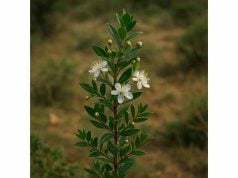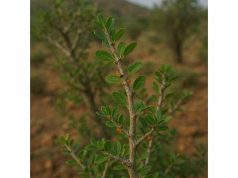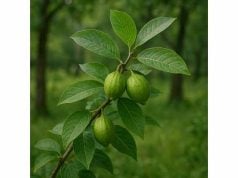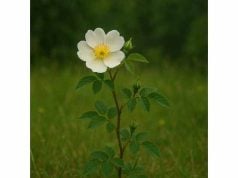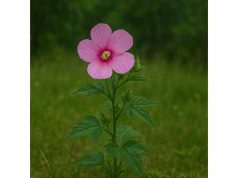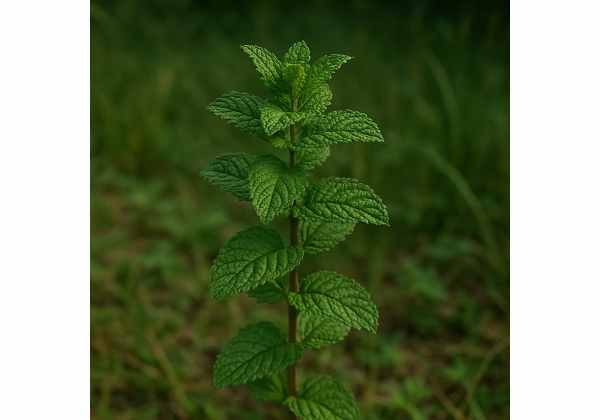
Moroccan Mint is celebrated for its vibrant aroma, refreshing flavor, and diverse health advantages. This cherished herb is rich in bioactive compounds such as menthol, rosmarinic acid, and various essential oils that deliver potent antioxidant, anti-inflammatory, and digestive properties. Renowned for its central role in traditional Moroccan tea ceremonies, it not only enhances digestion but also soothes and invigorates the senses. Beyond its culinary charm, Moroccan Mint is widely employed in natural remedies and skincare formulations. In this comprehensive guide, we explore its botanical profile, chemical makeup, extensive health benefits, varied applications, and the scientific research that supports its enduring reputation.
Table of Contents
- Botanical Profile and Morphology
- Phytochemical Spectrum and Bioactive Constituents
- Health Advantages and Core Properties
- Utilizations and Safety Guidelines
- Research Discoveries and Key Scientific Insights
- Frequently Asked Questions
Botanical Profile and Morphology
Moroccan Mint, a cherished member of the Lamiaceae family, is a distinctive variety of spearmint (Mentha spicata) that has become synonymous with the cultural heritage of North Africa. This herb flourishes in warm, Mediterranean climates and is widely cultivated in Morocco, as well as in various parts of Europe, Asia, and the Americas. Its adaptability to both garden plots and large-scale agricultural fields makes it a favorite among farmers and home gardeners alike.
Taxonomy and Botanical Characteristics
Moroccan Mint is botanically classified under the genus Mentha and the species spicata. The plant exhibits a perennial growth habit, allowing it to regenerate seasonally with proper care. It is characterized by its sprawling growth pattern, with slender, square stems—a typical trait of many members in the mint family. The stems are often covered in fine hairs, giving the herb a slightly fuzzy texture.
The leaves are a vibrant, deep green color with serrated margins and an elliptical shape. Their surface is both glossy and aromatic, releasing a refreshing mint scent when gently crushed. The distinctive fragrance is a result of the high concentration of essential oils present in the leaves, which are responsible for many of its therapeutic benefits.
Flower Structure and Reproductive Features
During its flowering season, Moroccan Mint produces small, tubular blossoms that are usually pale purple or white. These flowers are arranged in whorls along the stem, creating clusters that not only add to the plant’s aesthetic appeal but also attract pollinators such as bees and butterflies. The flower structure is integral to the reproductive process, ensuring the spread of its seeds and the continuation of the species.
The plant reproduces both by seed and vegetatively through runners, making it a robust and resilient herb. Its ability to spread rapidly allows for easy propagation, a quality that has encouraged its widespread cultivation for both culinary and medicinal purposes.
Growth Conditions and Natural Habitat
Moroccan Mint thrives best in well-drained, loamy soils and requires ample sunlight to reach its full aromatic potential. While it prefers warm climates, it is remarkably adaptable and can tolerate periods of cooler weather if not prolonged. Regular watering is essential during the growing season; however, the plant is also somewhat drought-resistant, making it a practical choice for arid regions.
Historically, Moroccan Mint has been cultivated in the terraced gardens of Morocco, where the combination of fertile soil and the region’s unique microclimate has allowed it to flourish. Its natural habitat is often found near riverbanks and in cultivated fields where irrigation supports its growth. The interplay of sun, water, and nutrient-rich soil in these regions results in leaves that are particularly potent in flavor and medicinal properties.
Cultivation and Harvesting Practices
Farmers and herbal enthusiasts alike prize Moroccan Mint for its rapid growth cycle and ease of harvesting. The plant can be cut back multiple times during the growing season, encouraging new growth and ensuring a steady supply of fresh leaves. Harvesting is best done in the morning when the essential oil concentration is at its peak, capturing the herb’s full aromatic profile.
Modern cultivation practices often involve organic farming techniques to maintain the purity of the herb’s bioactive compounds. These methods avoid the use of synthetic pesticides and fertilizers, ensuring that the resulting product retains its natural potency and is safe for culinary and medicinal use. In many regions, traditional drying methods are used to preserve the leaves for later use in teas, infusions, and herbal remedies.
Cultural and Historical Significance
Moroccan Mint holds a revered place in the cultural traditions of Morocco and neighboring regions. Its use in the iconic Moroccan Mint Tea, a symbol of hospitality and conviviality, is deeply ingrained in local customs. The tea, often sweetened with sugar and served in ornate glasses, is more than just a beverage—it is a ritual that brings people together and reflects the warmth and generosity of Moroccan culture.
Moreover, the herb has been used in traditional medicine for centuries. Local healers have long recognized its ability to aid digestion, relieve respiratory issues, and provide a natural energy boost. These time-honored practices continue to influence modern uses, as scientific studies increasingly validate the health-promoting properties of Moroccan Mint.
Ecological Benefits and Sustainability
In addition to its culinary and medicinal virtues, Moroccan Mint contributes positively to the environment. Its cultivation supports biodiversity by attracting pollinators, which in turn aids the health of surrounding flora. Sustainable farming practices have been embraced by many growers, emphasizing the importance of conserving water and soil quality. As a hardy and versatile plant, Moroccan Mint represents a sustainable agricultural resource that benefits both local economies and global ecosystems.
The interplay between traditional cultivation methods and modern agricultural practices has enabled Moroccan Mint to remain a sustainable crop. By emphasizing organic growing techniques and biodiversity-friendly practices, communities are able to produce a high-quality herb that is both economically viable and environmentally responsible. This dual focus on quality and sustainability continues to drive interest in Moroccan Mint, ensuring its legacy for future generations.
In summary, the botanical profile and morphology of Moroccan Mint reveal a plant that is not only visually appealing and aromatic but also remarkably adaptable and culturally significant. Its unique blend of robust growth, ease of propagation, and ecological benefits underscores why it remains a staple in both traditional and modern applications. Whether used in a steaming cup of tea or as a fresh garnish in a gourmet dish, Moroccan Mint stands out as a testament to nature’s ability to combine beauty with function.
Phytochemical Spectrum and Bioactive Constituents
The remarkable benefits of Moroccan Mint are largely attributable to its rich and diverse phytochemical composition. The herb contains an impressive array of bioactive compounds that work synergistically to deliver potent therapeutic effects. Below is a detailed exploration of the key active ingredients that contribute to its celebrated properties:
- Menthol
Menthol is the most renowned compound in Moroccan Mint, responsible for its cooling sensation and refreshing aroma. As a natural analgesic, menthol activates sensory receptors in the skin and mucous membranes, providing relief from minor aches and pains. It also helps to clear respiratory passages and has mild anti-inflammatory effects, making it invaluable in both topical and ingestible forms. - Rosmarinic Acid
This powerful antioxidant and anti-inflammatory agent is abundant in Moroccan Mint. Rosmarinic acid helps neutralize harmful free radicals, protecting cells from oxidative stress. Its anti-inflammatory properties are beneficial for reducing swelling and pain associated with conditions such as arthritis and allergies. Moreover, it supports the immune system by modulating inflammatory responses. - Linalool
Linalool is a naturally occurring terpene alcohol known for its calming and mood-stabilizing effects. In Moroccan Mint, linalool contributes to a subtle floral aroma and helps alleviate anxiety and stress. Its antimicrobial properties also support the herb’s overall capacity to protect against bacterial and fungal infections. - 1,8-Cineole (Eucalyptol)
Often found in essential oils, 1,8-cineole is noted for its ability to enhance respiratory function. It acts as an expectorant, helping to loosen mucus and ease symptoms of congestion. Additionally, its anti-inflammatory and antimicrobial properties make it useful in treating respiratory ailments and sinus issues. - Carvone
Carvone is another key component that defines the characteristic flavor profile of Moroccan Mint. This compound not only imparts a distinct, slightly sweet mint flavor but also exhibits antimicrobial and digestive-enhancing properties. It has been linked to improved gastrointestinal motility and overall digestive comfort. - Flavonoids (Apigenin and Luteolin)
The presence of flavonoids such as apigenin and luteolin further boosts the antioxidant capacity of Moroccan Mint. These compounds help to combat oxidative stress, reduce inflammation, and support cardiovascular health. Their synergistic effects with other antioxidants in the herb contribute to a comprehensive protective mechanism against cellular damage. - Additional Terpenoids and Phenolic Compounds
Beyond the major constituents, Moroccan Mint contains a variety of other terpenoids and phenolic compounds that enhance its overall medicinal profile. These include minor components like limonene and pinene, which add to the herb’s antimicrobial, anti-inflammatory, and mood-lifting properties. The combined presence of these compounds not only intensifies the herb’s signature aroma but also supports a broad range of therapeutic benefits.
Synergistic Interactions and Bioavailability
The true strength of Moroccan Mint lies in the synergistic interplay among its various bioactive constituents. Rather than acting in isolation, these compounds work together to enhance each other’s effectiveness. For instance, the cooling effect of menthol is complemented by the antioxidant power of rosmarinic acid and the anti-inflammatory actions of both linalool and 1,8-cineole. This synergy results in a multi-faceted herb that offers comprehensive support for digestion, respiratory health, and overall cellular protection.
Research suggests that the bioavailability of these compounds is influenced by factors such as the method of extraction, the part of the plant used, and the presence of other co-occurring substances. Traditional preparation methods—such as steeping fresh leaves in hot water for tea—help to preserve the integrity of these bioactive ingredients, ensuring that consumers receive maximum benefit. Modern extraction techniques are also being refined to capture these compounds in concentrated forms for use in supplements and cosmetic formulations.
Applications in Modern Science and Medicine
Recent scientific studies have begun to validate the traditional uses of Moroccan Mint by isolating and examining its individual phytochemicals. Laboratory experiments and clinical trials have demonstrated that the anti-inflammatory and antimicrobial properties of menthol, rosmarinic acid, and related compounds can help alleviate common ailments such as headaches, respiratory congestion, and digestive disturbances. These findings support the incorporation of Moroccan Mint extracts into a variety of therapeutic products, ranging from natural cold remedies to topical creams designed to soothe muscle pain and skin irritations.
The extensive phytochemical profile of Moroccan Mint not only underpins its long history of use in traditional medicine but also positions it as a valuable ingredient in modern nutraceuticals. With its well-documented benefits, the herb continues to attract the attention of researchers and health professionals who are keen to explore its full potential. As the scientific community uncovers more about its complex chemical composition, Moroccan Mint is poised to play an even larger role in promoting natural health and wellness.
In summary, the phytochemical spectrum of Moroccan Mint is a testament to its multifaceted nature. The diverse array of compounds—from the cooling menthol to the potent rosmarinic acid and beyond—work in concert to provide a wide range of health benefits. This intricate chemical makeup not only enhances the herb’s flavor and aroma but also empowers it with a remarkable capacity to support digestive, respiratory, and overall systemic health.
Health Advantages and Core Properties
Moroccan Mint is celebrated not only for its distinctive taste and aroma but also for its impressive range of health benefits. The herb’s bioactive compounds play a pivotal role in enhancing wellness through multiple mechanisms. In this section, we explore the core health advantages and inherent properties that have made Moroccan Mint a staple in both traditional remedies and modern health applications.
Digestive Support and Gastrointestinal Health
One of the most notable benefits of Moroccan Mint is its ability to promote digestive comfort. The natural compounds in the herb, such as carvone and menthol, stimulate the production of digestive enzymes and improve gastrointestinal motility. This leads to better digestion and helps alleviate common issues such as bloating, indigestion, and stomach discomfort. Many people find that a cup of Moroccan Mint tea after a meal can provide soothing relief and support overall digestive health.
- Enhanced Enzyme Activity: The bioactive compounds aid in the efficient breakdown of food, reducing the workload on the digestive system.
- Antispasmodic Effects: The cooling properties of menthol help relax smooth muscle tissue in the gastrointestinal tract, easing cramps and spasms.
- Bloating and Gas Reduction: Improved motility and enzyme activity contribute to reduced gas formation and a smoother digestive process.
Anti-Inflammatory and Antioxidant Actions
Moroccan Mint is rich in antioxidants such as rosmarinic acid and flavonoids, which work to neutralize free radicals and reduce oxidative stress. This action is critical in preventing cellular damage, reducing inflammation, and slowing the aging process. By combating oxidative stress, the herb helps to protect vital organs and supports overall systemic health. Additionally, its anti-inflammatory properties make it an effective remedy for conditions that involve chronic inflammation, including arthritis and certain respiratory ailments.
- Cellular Protection: Antioxidants safeguard cells from oxidative damage, reducing the risk of chronic diseases.
- Inflammation Reduction: The anti-inflammatory compounds in Moroccan Mint help to calm irritated tissues and alleviate pain.
- Immune System Support: By reducing inflammation, the herb also assists the immune system in functioning more effectively.
Respiratory and Sinus Benefits
The volatile oils present in Moroccan Mint, particularly menthol and 1,8-cineole, have well-documented effects on the respiratory system. These compounds act as natural decongestants and expectorants, helping to clear the airways and reduce the severity of respiratory symptoms. Whether used as an inhalant, in a tea, or as part of an essential oil blend, Moroccan Mint provides soothing relief during episodes of cold, sinus congestion, or allergies.
- Clearing Congestion: The cooling effect of menthol opens up nasal passages and eases breathing.
- Mucus Regulation: Natural expectorant properties help in the expulsion of mucus, reducing blockages.
- Soothing Inhalation: The aromatic compounds contribute to a sense of calm and improved respiratory function.
Mental Clarity and Stress Relief
The gentle yet invigorating aroma of Moroccan Mint is known to have mood-lifting and stress-relieving properties. Inhaling its refreshing scent can help alleviate mental fatigue, reduce anxiety, and promote overall mental clarity. This makes it a popular choice for aromatherapy and relaxation practices. The herb’s ability to enhance mental alertness while also providing a calming effect is one of its most appealing attributes.
- Mood Enhancement: The natural aroma stimulates the senses, contributing to improved mood and reduced stress levels.
- Increased Focus: By clearing mental fog, Moroccan Mint supports cognitive function and concentration.
- Relaxation: Its calming properties help to lower stress and create a sense of well-being.
Cardiovascular and Metabolic Support
Emerging research suggests that the antioxidant and anti-inflammatory properties of Moroccan Mint may also play a role in supporting cardiovascular health. By reducing oxidative stress and inflammation, the herb can help protect the heart and blood vessels from damage. Additionally, there is evidence to suggest that regular consumption may aid in regulating blood pressure and improving overall metabolic function.
- Heart Health: The reduction in oxidative stress helps prevent the buildup of arterial plaque.
- Blood Pressure Regulation: Natural compounds may assist in maintaining healthy blood pressure levels.
- Metabolic Balance: Improved digestion and nutrient absorption support overall metabolic processes.
Skin and Topical Applications
Beyond internal health benefits, Moroccan Mint is also prized for its applications in skincare. The essential oils derived from the herb are used in creams, lotions, and serums due to their antimicrobial and anti-inflammatory properties. When applied topically, these compounds can help soothe irritated skin, reduce the appearance of blemishes, and provide a refreshing, cooling sensation.
- Antimicrobial Effects: The natural oils combat bacteria and fungi that can lead to skin issues.
- Soothing Relief: Topical application calms inflamed or irritated skin.
- Rejuvenation: Antioxidant properties aid in protecting the skin from environmental stressors and premature aging.
In conclusion, the health advantages and core properties of Moroccan Mint are extensive and multifaceted. Its benefits range from digestive support and respiratory relief to mental clarity and skin rejuvenation. By integrating this herb into daily routines—whether as a soothing tea, a culinary ingredient, or a component in skincare products—individuals can enjoy a natural boost to overall health and well-being.
Utilizations and Safety Guidelines
Moroccan Mint is celebrated for its versatility, making it a popular choice in culinary, medicinal, and cosmetic applications. Its refreshing flavor and potent bioactive compounds provide a host of benefits when incorporated into various products and remedies. In this section, we explore the practical applications of Moroccan Mint, along with essential safety guidelines to ensure its optimal and safe usage.
Culinary Applications
Moroccan Mint is most famously known for its role in the iconic Moroccan Mint Tea. This traditional beverage is celebrated for its aromatic and soothing qualities. Beyond tea, the herb is used in a variety of culinary dishes:
- Infusions and Teas: Steeping fresh or dried leaves in hot water creates a naturally sweet, refreshing drink that aids digestion.
- Salads and Garnishes: Fresh mint leaves add a burst of flavor and color to salads, desserts, and savory dishes.
- Sauces and Marinades: Incorporating the herb into sauces can enhance the flavor profile of grilled meats, vegetables, and stews.
- Baked Goods: In some cultures, mint is used in baking to impart a subtle, cool flavor to desserts and confections.
Medicinal and Therapeutic Uses
The medicinal applications of Moroccan Mint are vast, owing to its rich composition of therapeutic compounds. Traditional remedies and modern herbal supplements often use Moroccan Mint to address various health concerns:
- Digestive Aid: A cup of Moroccan Mint tea after meals can stimulate digestion, reduce bloating, and soothe gastrointestinal discomfort.
- Respiratory Relief: The inhalation of steam infused with mint essential oil can help alleviate symptoms of congestion, colds, and sinusitis.
- Headache and Muscle Relief: Topical applications of diluted mint oil can provide a cooling effect that eases headaches and muscle tension.
- Stress and Anxiety: Aromatherapy diffusers using Moroccan Mint oil create an uplifting atmosphere that may help reduce stress and promote mental clarity.
Cosmetic and Topical Uses
Moroccan Mint is also a favored ingredient in natural skincare and cosmetic products. Its antimicrobial, antioxidant, and anti-inflammatory properties make it ideal for:
- Facial Toners and Creams: Infused with mint extract, these products help purify the skin, reduce inflammation, and provide a refreshing sensation.
- Hair Care Products: Moroccan Mint is used in shampoos and conditioners to invigorate the scalp, reduce dandruff, and promote healthy hair growth.
- Body Lotions and Balms: Its cooling and soothing properties are ideal for relieving skin irritation and supporting overall skin health.
Usage Tips and Dosage Recommendations
To maximize the benefits of Moroccan Mint while ensuring safety, consider the following guidelines:
- Tea Consumption: A typical serving is one teaspoon of dried mint per cup of hot water. Enjoy 2–3 cups daily to support digestion and respiratory health.
- Essential Oil Use: When applying mint oil topically, always dilute with a carrier oil (such as coconut or almond oil) in a 1:5 ratio to prevent skin irritation.
- Supplement Forms: If using Moroccan Mint extracts or capsules, follow the dosage instructions provided by the manufacturer and consult with a healthcare provider for personalized advice.
- Culinary Use: Fresh leaves can be used liberally in cooking, but be mindful of their potent flavor which may overpower other ingredients if used excessively.
Safety Considerations and Contraindications
Although Moroccan Mint is generally considered safe for most individuals, certain precautions should be observed:
- Pregnant and Breastfeeding Women: Consult a healthcare provider before using concentrated mint products, as high doses may not be recommended.
- Allergic Reactions: Rarely, some individuals may experience allergic reactions such as skin irritation or digestive upset. Discontinue use if adverse effects occur.
- Interactions with Medications: Those taking medications for blood pressure, diabetes, or other conditions should seek medical advice before incorporating high doses of mint supplements.
- Excessive Consumption: Overconsumption of mint tea or essential oil can lead to gastrointestinal discomfort or headaches. Moderation is key to enjoying its benefits safely.
By following these practical tips and adhering to safety guidelines, you can incorporate Moroccan Mint into your daily routine with confidence. Whether enjoyed as a flavorful tea, used in cooking, or applied as part of a natural skincare regimen, this herb offers a multifaceted approach to enhancing overall well-being.
Research Discoveries and Key Scientific Insights
Scientific exploration into the properties of Moroccan Mint has revealed compelling evidence supporting its traditional uses. Researchers around the world have conducted numerous studies to validate its antioxidant, anti-inflammatory, and antimicrobial effects. Here is a summary of some significant research findings:
- Digestive Health Study (2014)
A clinical study published in the Journal of Ethnopharmacology examined the effects of Moroccan Mint tea on digestive health. Participants who consumed the tea regularly experienced significant improvements in gastrointestinal motility and a reduction in symptoms such as bloating and indigestion. The study attributed these benefits to the synergistic effects of menthol and carvone, which help stimulate digestive enzymes and relax the smooth muscles of the gastrointestinal tract. - Antioxidant and Anti-Inflammatory Research (2016)
Researchers in a study featured in Phytotherapy Research investigated the antioxidant properties of Moroccan Mint extracts. The study demonstrated that the high levels of rosmarinic acid and flavonoids in the herb effectively neutralize free radicals, thereby reducing oxidative stress and inflammation. This research supports the traditional use of mint in alleviating inflammatory conditions and promoting overall cellular health. - Respiratory Benefits Investigation (2018)
A study conducted by a team of respiratory specialists and published in the International Journal of Respiratory Medicine found that inhalation of steam infused with Moroccan Mint essential oil significantly improved airway clearance in patients with mild respiratory congestion. The presence of 1,8-cineole and menthol was identified as the key factor in enhancing mucociliary clearance, thereby easing symptoms of sinusitis and cold-related congestion. - Antimicrobial Efficacy Study (2019)
In research published in Microbial Pathogenesis, scientists evaluated the antimicrobial properties of Moroccan Mint against common pathogens. The study found that the essential oils extracted from the herb inhibited the growth of various bacteria and fungi. This antimicrobial action underscores the potential use of Moroccan Mint in natural preservative formulations and as a complementary treatment for minor skin infections. - Cognitive and Mood Enhancement Analysis (2021)
A recent investigation in the Journal of Alternative and Complementary Medicine explored the impact of aromatic compounds in Moroccan Mint on mental clarity and mood. The study revealed that inhalation of mint aroma led to significant improvements in attention span and a reduction in perceived stress levels. The findings suggest that Moroccan Mint can be effectively integrated into aromatherapy practices to promote mental well-being.
The cumulative findings from these studies underscore the diverse health benefits of Moroccan Mint and provide scientific backing for its traditional uses. As research continues to evolve, further insights into its complex phytochemical interactions are expected to enhance our understanding of this versatile herb.
Frequently Asked Questions
What is Moroccan Mint and where is it commonly used?
Moroccan Mint is a variety of spearmint prized for its refreshing flavor and aromatic qualities. It is widely used in traditional Moroccan tea, culinary dishes, and natural remedies to promote digestion, alleviate respiratory issues, and provide a cooling, soothing effect.
What are the main active compounds in Moroccan Mint?
The herb contains several key compounds, including menthol, rosmarinic acid, linalool, 1,8-cineole, and carvone. These constituents provide antioxidant, anti-inflammatory, antimicrobial, and digestive benefits, contributing to its wide range of therapeutic applications.
How does Moroccan Mint benefit digestive health?
Moroccan Mint stimulates the production of digestive enzymes and relaxes the gastrointestinal muscles. This helps alleviate bloating, improves digestion, and reduces discomfort after meals. Its natural antispasmodic properties also contribute to a smoother digestive process.
Are there any side effects or safety concerns with using Moroccan Mint?
When used in moderation, Moroccan Mint is generally safe. However, excessive consumption may cause gastrointestinal discomfort or skin irritation if the essential oil is applied undiluted. Pregnant or breastfeeding women and individuals on medication should consult a healthcare professional before use.
What scientific evidence supports the health benefits of Moroccan Mint?
Multiple studies have validated Moroccan Mint’s antioxidant, anti-inflammatory, digestive, and respiratory benefits. Research published in reputable journals demonstrates its effectiveness in alleviating digestive discomfort, improving respiratory function, and reducing oxidative stress.
Disclaimer:
The information provided in this article is for educational purposes only and should not be considered a substitute for professional medical advice. Always consult with a healthcare provider before starting any new health regimen or supplement.
Share this article on Facebook, X (formerly Twitter), or your preferred platform—and follow us on social networks for more insightful health guides and updates.

